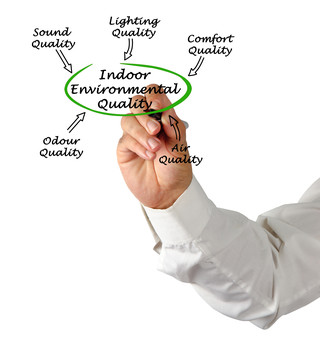Energy Efficient Renovation of Existing Buildings for HVAC professionals (GB32)
This Guidebook presents the fundamentals for specific energy efficiency and other renovation measures in existing buildings for which HVAC systems play an important role. Emphasis is placed on market-ready and technically mature solutions that have been proven in practice to increase building renovation rates and facilitate the enregy renovation process of existing buildings.
Indoor Environment and Energy Efficiency in Educational Buildings (GB13) By: REHVA
Indoor and Energy Efficiency in Educational Buildings Guidebook describes the optimal design and operation of schools with respect to low energy cost and performance of the students.
Air Filtration in HVAC Systems (GB11) By: REHVA
Air filtration Guidebook will help the designer and user to understand the background and criteria for air filtration, how to select air filters and avoid problems associated with hygienic and other conditions at operation of air filters.
Indoor Thermal Comfort By: AICARR
This Special Issue invites scholars to contribute original research and review articles on innovative design, systems, and/or control domains that can enhance occupant comfort, work productivity, wellbeing in a built environment, and the integration of human factors in buildings energy performance.
Advances in Refrigeration Technologies for Climate Change Mitigation By: AICARR
There is a strong need to make available to the scientific community a collection of the most recent research results in the field of refrigeration to mitigate climate change. Therefore, this Research Topic is both an opportunity for researchers to demonstrate their innovative proposals, and a necessary response to the need to safeguard our planet while continuing to satisfy of one of the essential human needs: refrigeration.
Mixing ventilation - Guidebook on Mixing Air Distribution Design (GB19) By: REHVA
In this guidebook most of the known and used in practice methods for achieving mixing air distribution are discussed. Mixing ventilation has been applied to many different spaces providing fresh air and thermal comfort to the occupants.
Moist and compressed air (SRB43) By: SMEITS
Mixtures with one gas component and one vapour component are mixtures of gases and vapours. A typical example of such mixture is moist or humid air. In previous considerations moist or humid air was treated as a vapour-gas mixture, which is in gaseous state, with an important characteristic that, depending of temperature, one of the components can be condensed. Such component is called vapour (water vapour), and the other non-condensing component is gas (dry air). However, in nature, practically there are no dry gases and there is a question whether, due to such characteristics as well as the characteristic of drying the dry air, we should use the term ? dry air. In fact, dry gas (dry air) can be humidified in the form of small drops of mist that result from a mutual chemical reaction of free atoms of the dry atmospheric air components.
2.02 Indoor air quality By: ATECYR
This guide analyzes the parameters that must be taken into account in the design of a new installation or in the reform of an existing one, ensuring a correct indoor air quality.

